Oppo Find N2 Flip and Find N2: everything you need to know
The Find N2 and Find N2 Flip have landed
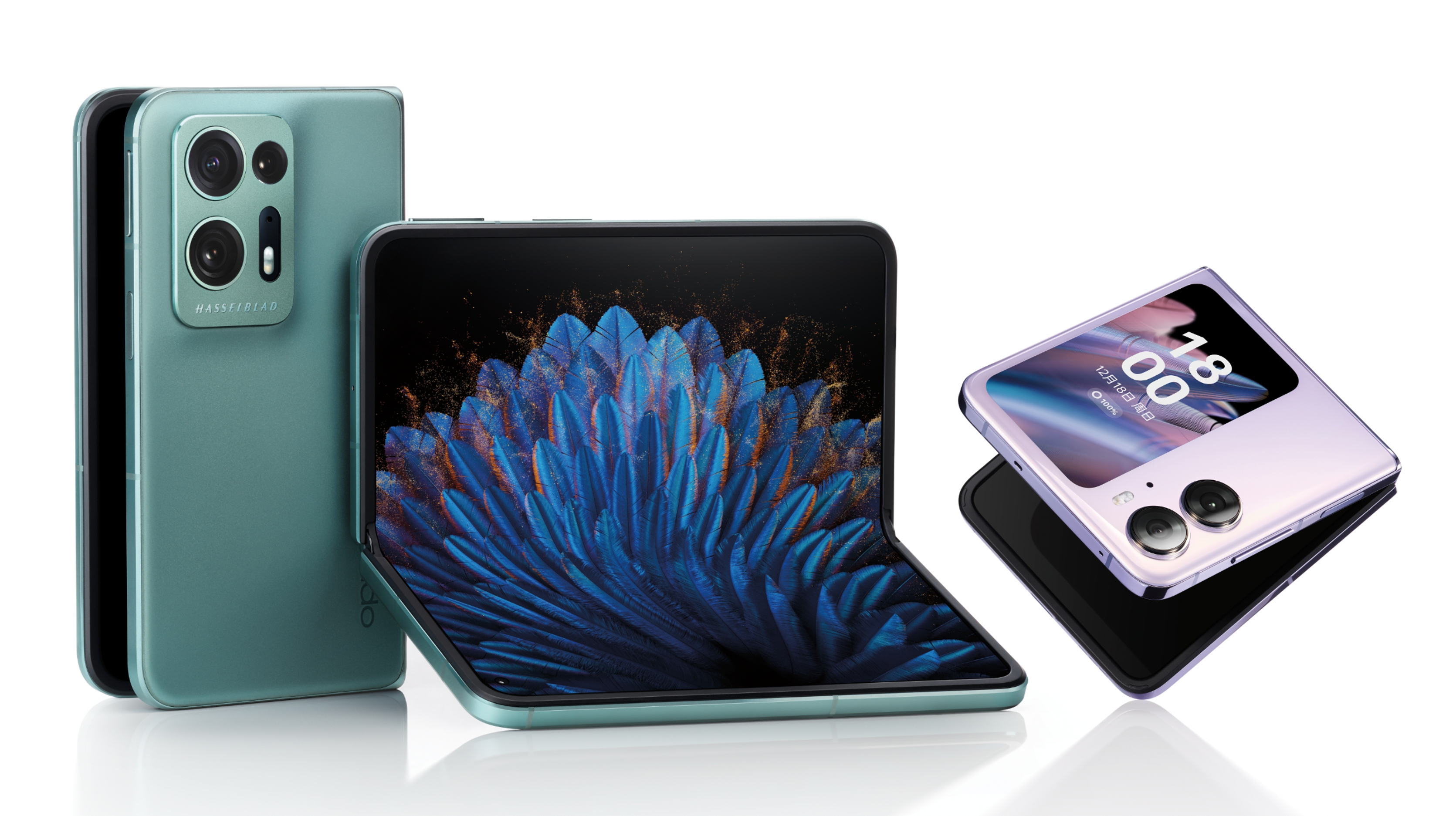
Following a launch in China in late 2022, the Oppo Find N2 Flip has now gone global, launching in international markets on March 2, 2023.
This phone wasn't alone in China, it was joined by the standard Oppo Find N2, with the N2 and the N2 Flip being Oppo’s foldable rivals to the Samsung Galaxy Z Fold 4 and Samsung Galaxy Z Flip 4, respectively.
However, the standard N2 isn't available globally, so you'll only easily be able to buy the Oppo Find N2 Flip, and even then it's not out in all regions.
Below you'll find full specs and details of both handsets, including availability and price in the case of the Oppo Find N2 Flip.
Cut to the chase
- What is it? The latest foldable Oppo phones
- When is it out? The Find N2 Flip launched on February 15 in some regions
- How much will it cost? £849 / AU$1,499 (around $1,025)
Oppo Find N2 Flip and Find N2 release date and price

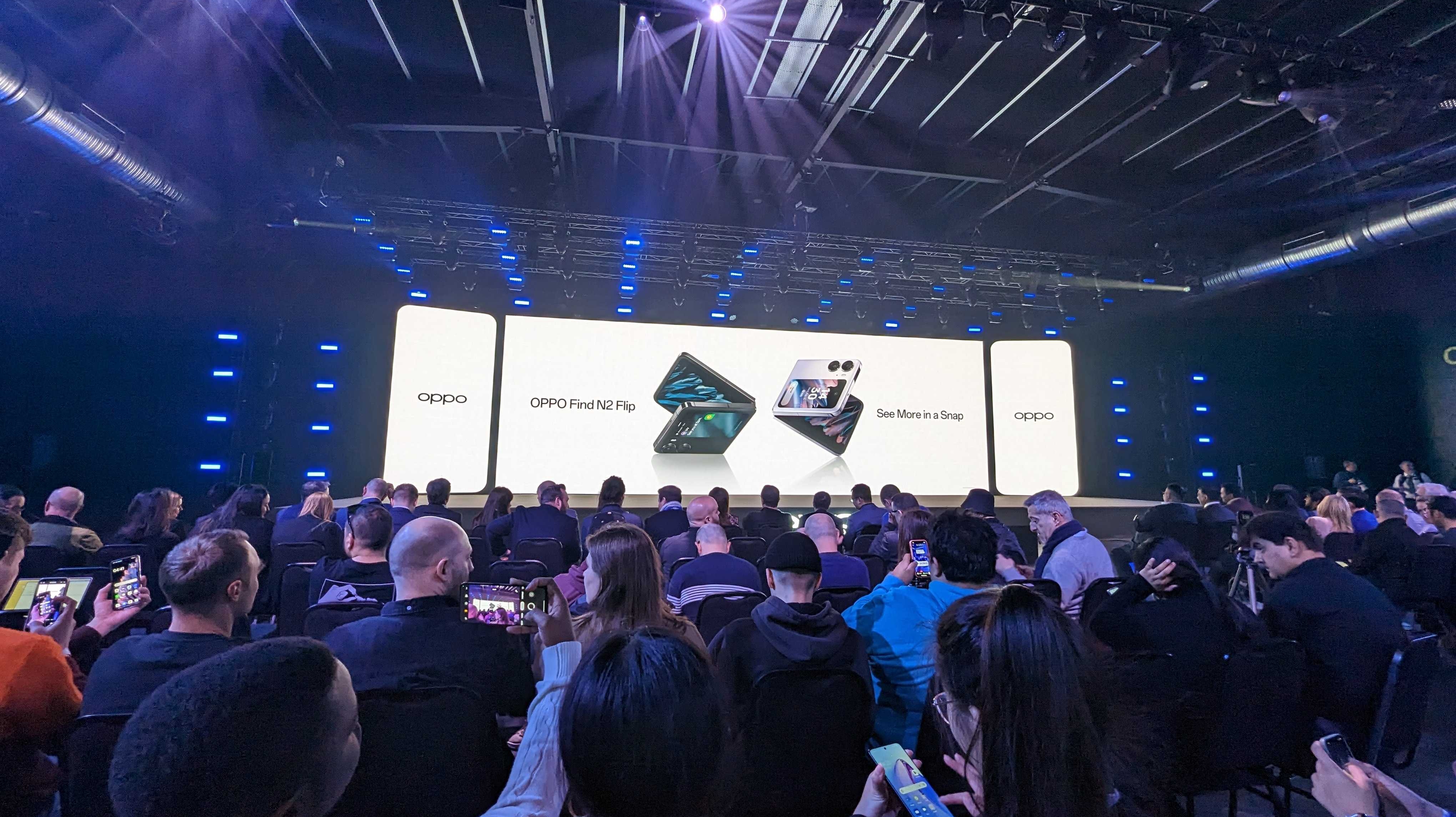
The Oppo Find N2 series was unveiled on December 15, 2022 at the company's annual Inno Day event, in China. That launch was only for China though, but the Oppo Find N2 Flip has since had a global launch, at a second launch which happened on February 15, 2023.
As of March 2, the Find N2 Flip is now on sale in select European markets, including the UK. Meanwhile, Oppo has announced that the Find N2 Flip will also land in Australia on March 16, with pre-orders expected to go live from March 2. However, we wouldn't expect it to be available in the US, Oppo phones generally don't release in the region.
It also doesn’t sound like the standard Oppo Find N2 will get the same wider roll out as the Flip, so if you were hoping to be able to buy the company's squat Galaxy Z Fold rival, you might be out of luck.
Sign up for breaking news, reviews, opinion, top tech deals, and more.
As for pricing, the Oppo Find N2 Flip costs £849 (around $1,025) in the UK and will cost AU$1,499 in Australia. That makes it surprisingly affordable by foldable phone standards, undercutting its most like-minded rival, the Galaxy Z Flip 4.
Oppo Find N2 Flip and Find N2 design and display
The Oppo Find N2 Flip looks a lot like the Z Flip 4, the Motorola Razr (2022), and other clamshell foldable phones. So it has a normal smartphone-sized foldable screen, which when folded shut shrinks the phone down to a more compact size.
However, where rival handsets have tiny cover displays, the Oppo Find N2 Flip’s is a bigger 3.26-inch 382 x 720 AMOLED screen . It’s big enough, for example, to display six notifications at once. For comparison, the Samsung Galaxy Z Flip 4 only has a 1.9-inch display.
The foldable screen on the Oppo Find N2 Flip is a 6.8-inch 1080 x 2520 AMOLED panel with a 120Hz refresh rate, HDR10+, a peak brightness of 1,600 nits, and 403 pixels per inch.


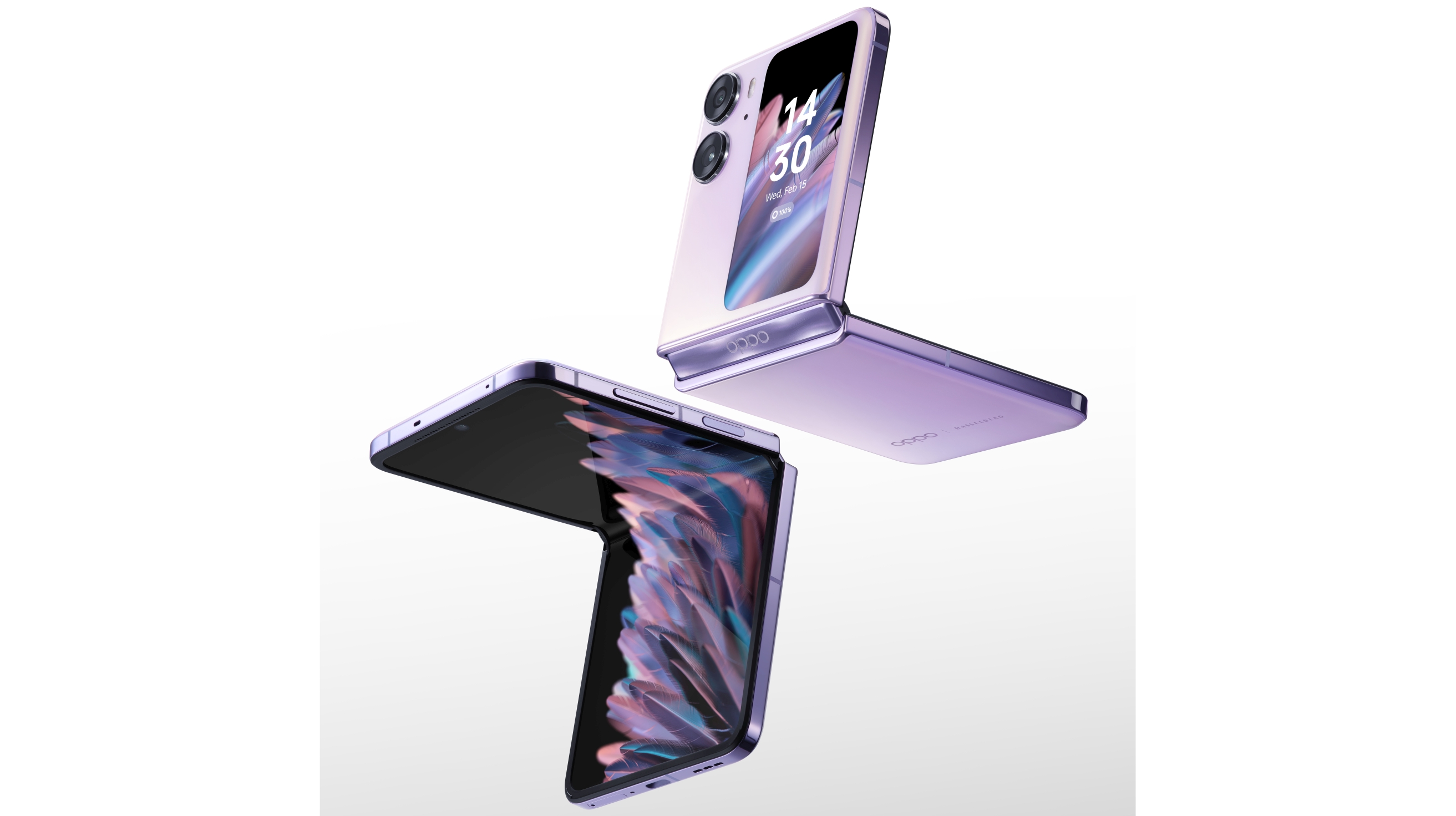

Oppo also claims that – thanks to an improved hinge – the Find N2 Flip has an almost-invisible crease across its foldable screen.
In all, the Find N2 Flip is 166.2 x 75.2 x 7.5mm when unfolded, and 85.5 x 75.2 x 16mm when folded shut, and it weighs 191g. The available colors include Astral Black and Moonlight Purple. There's a gold shade too, but that remains a China-exclusive.
The standard Oppo Find N2 looks more like the Samsung Galaxy Z Fold 4, with a big 7.1-inch 1792 x 1920 foldable AMOLED display that has a 120Hz refresh rate.
Fold it shut and you can make use of a 5.54-inch 1080 x 2120 AMOLED external display with a 120Hz refresh rate.
The Find N2 has a lightweight design, coming in at just 233g, if you get the black vegan leather finish. It’s also available in green and white Gorilla Glass Victus versions, and those are almost as light, at 237g. For reference, the Galaxy Z Fold 4 is 263g.
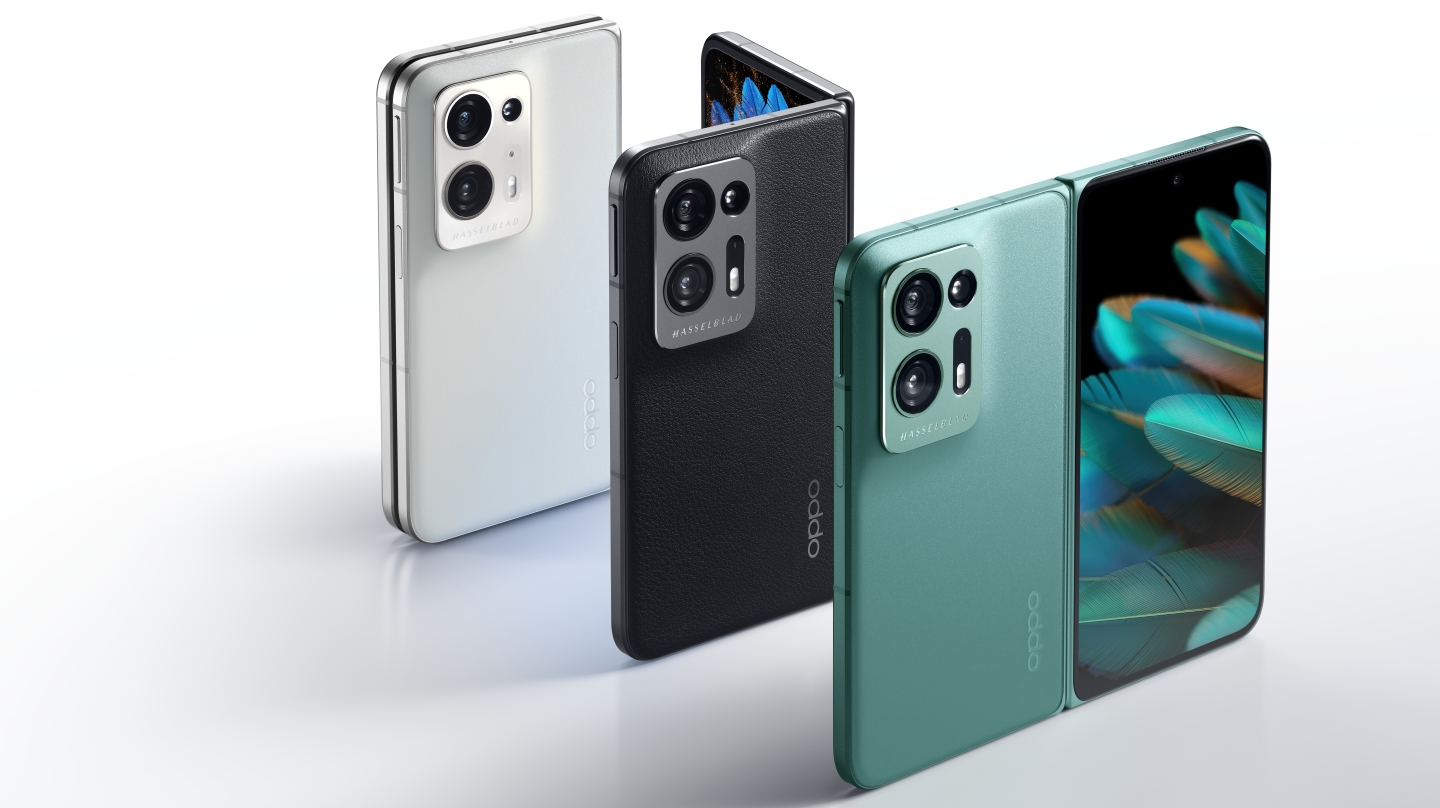
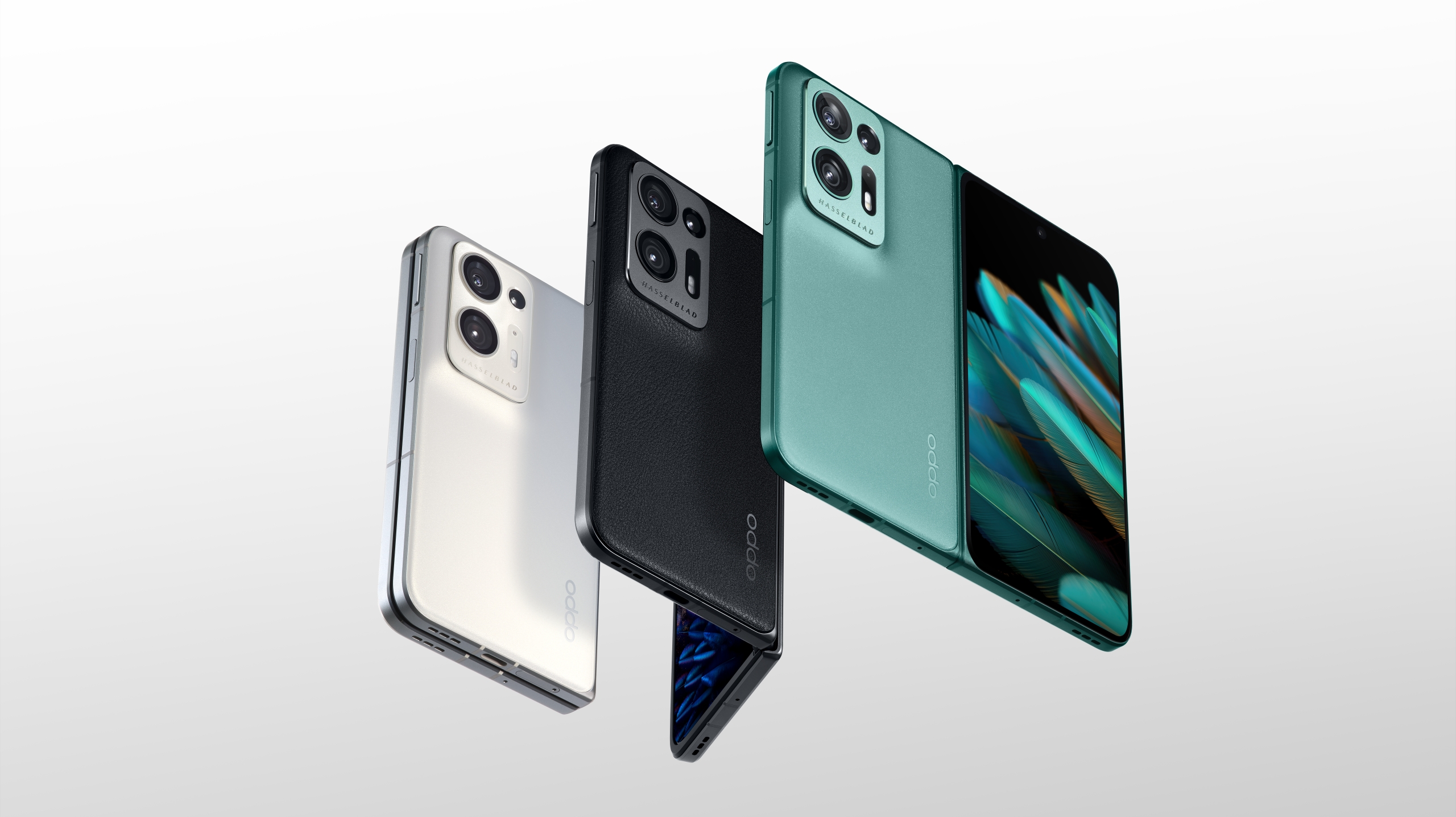
Oppo Find N2 Flip and Find N2 camera and battery
The Oppo Find N2 Flip has a 50MP f/1.8 primary camera and an 8MP f/2.2 ultrawide, with a 112-degree field of view. It also has a 32MP f/2.4 selfie camera, though, of course, being a foldable phone you can use the main cameras for selfies anyway, with the cover screen being used to line up the shot.
As for the battery, that’s 4,300mAh – which makes it much bigger than the batteries in other clamshell foldables, and it charges at 44W, making it faster than like-minded rivals too.
The standard Oppo Find N2 has a triple-lens camera with a 50MP f/1.8 main sensor, a 48MP f/2.2 ultrawide, and a 32MP f/2.0 telephoto sensor with 2x optical zoom. It also has two 32MP f/2.4 selfie cameras – one on each screen.
Its battery is 4,520mAh, and it charges at 67W, which can get it from zero to 100% in about 42 minutes.
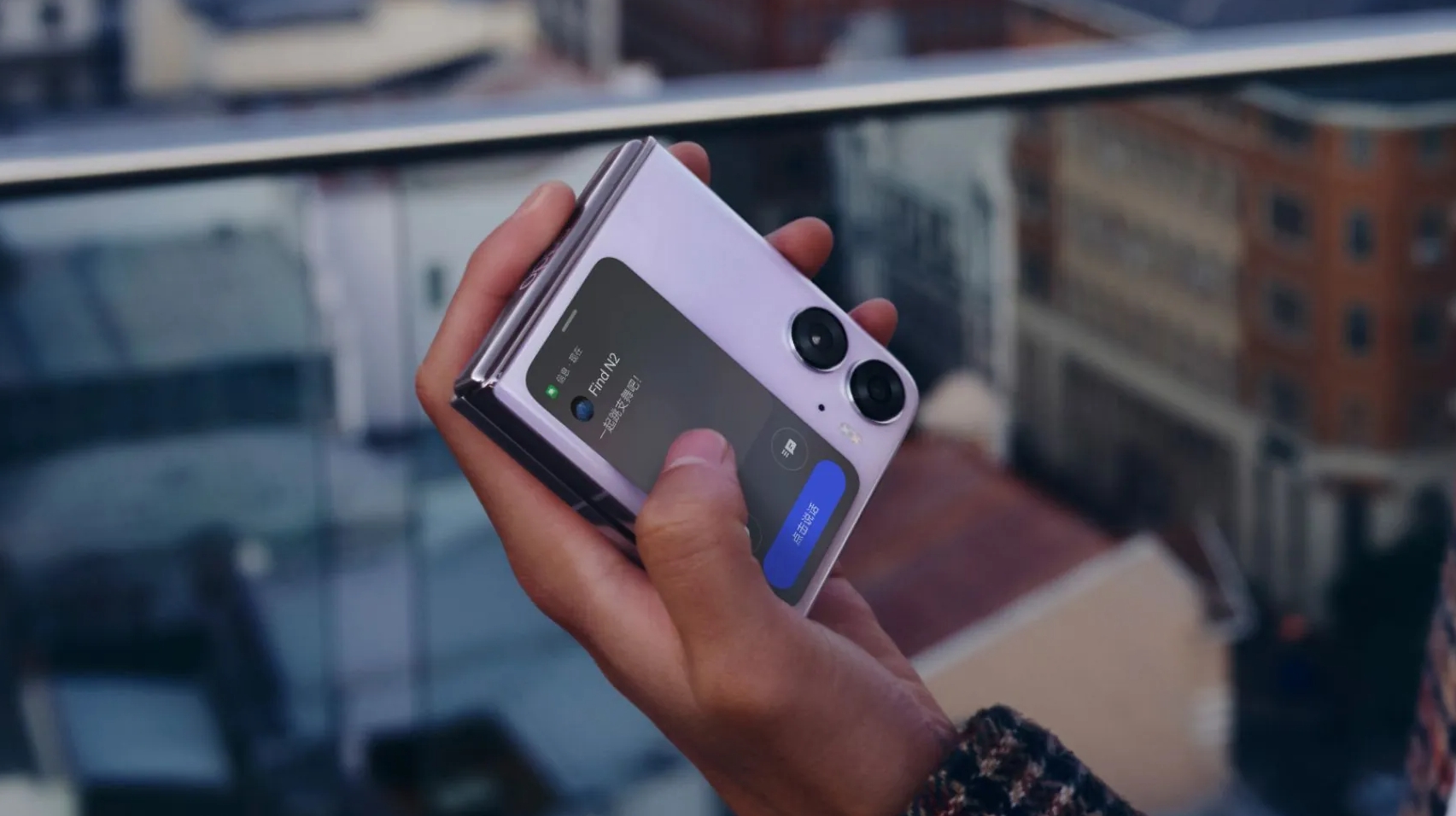
Oppo Find N2 Flip and Find N2 specs and features
The Oppo Find N2 Flip has a MediaTek Dimensity 9000 Plus chipset, which is one of the most powerful SoCs of 2022, but less powerful than the new Snapdragon 8 Plus Gen 2, which we’re likely to see in a lot of 2023’s phones, foldables included.
The phone currently only comes in one configuration in international markets, with 8GB of RAM and 256GB of storage. There are other configurations in China, but these aren't sold globally.
It also supports 5G, has a side-mounted fingerprint sensor, and runs Android 13 with the promise of four major operating system updates and five years of security patches – a first for Oppo's smartphones.
The Find N2 Flip uses Oppo’s ColorOS 13 interface, as does the standard Oppo Find N2.
Speaking of the Oppo Find N2, that has a similarly powerful Snapdragon 8 Plus Gen 1 chipset, and comes in two configurations – one with 12GB of RAM and 256GB of storage, and the other with 16GB of RAM and 512GB of storage.
It also supports 5G, and has a side-mounted fingerprint sensor and dual Dolby Atmos-powered stereo speakers. In all, it sounds like it could be one of the best foldable phones, so it's a shame only the Flip has gone global.
James is a freelance phones, tablets and wearables writer and sub-editor at TechRadar. He has a love for everything ‘smart’, from watches to lights, and can often be found arguing with AI assistants or drowning in the latest apps. James also contributes to 3G.co.uk, 4G.co.uk and 5G.co.uk and has written for T3, Digital Camera World, Clarity Media and others, with work on the web, in print and on TV.
- Alex Walker-ToddSenior Phones Editor